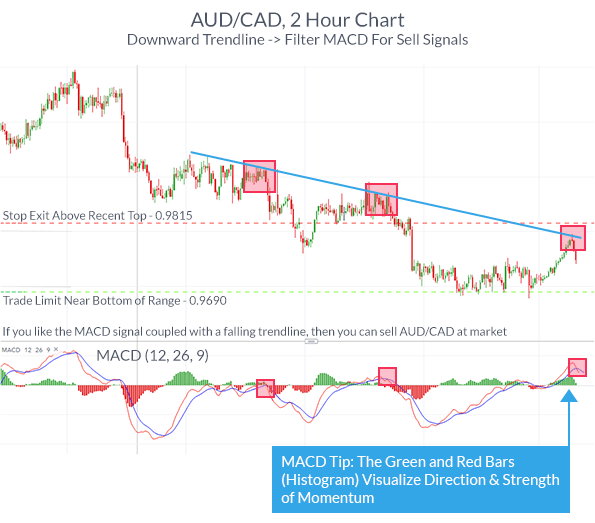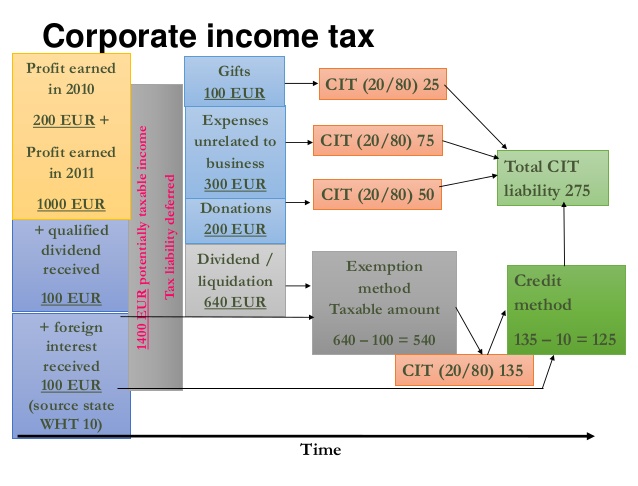The Accounting Cycle: 8 Steps You Need To Know
Contents:


For example, Apple representing nearly $200 billion in cash & cash equivalents in its balance sheet is an accounting transaction. When the post-closing trial balance is good, you’ve reached the completion of the accounting cycle at year-end. Once all ten steps of the accounting cycle are complete, it is time to begin a new accounting period.
- Closing is usually a good time to file paperwork, plan for the next reporting period, and review a calendar of future events and tasks.
- In earlier times, these steps were followed manually and sequentially by an accountant.
- You can then show these financial statements to your lenders, creditors and investors to give them an overview of your company’s financial situation at the end of the fiscal year.
- After the adjusting entries have been passed and posted to respective ledger accounts, the unadjusted trial balance needs to be corrected to show the impact of these adjustments.
- First, an income statement can be prepared using information from the revenue and expense account sections of the trial balance.
Many companies have these steps automated through accounting software and the use of technology. Depending on the system capabilities, a bookkeeper might be needed to intervene at some stages. Therefore, it is important for them to understand the steps involved in the overall process to better tackle any situation they might be faced with. Even small businesses would benefit from using the accounting cycle in their business, and if you are using accrual accounting, it’s an absolute must. An adjusting journal entry occurs at the end of a reporting period to record any unrecognized income or expenses for the period.
The Accounting Cycle
Theaccounting cycleis a basic, eight-step process for completing a company’s bookkeeping tasks. It provides a clear guide for the recording, analysis, and final reporting of a business’s financial activities. As the accounting cycle is followed, transactions are written down in the journal chronologically before getting updated on the general ledger in the appropriate company account. The accounting cycle is an important step in finding errors should transactions not balance correctly before any financial statements are published. For example, when a transaction is recorded using accrual accounting, it happens at the time of the sale. This happens regardless of whether or not cash has moved in or out of business.
What is Order to Cash (O2C)? Definition from WhatIs.com – TechTarget
What is Order to Cash (O2C)? Definition from WhatIs.com.
Posted: Mon, 07 Feb 2022 22:17:12 GMT [source]
The second step in the accounting cycle is to analyze the source documents. The purpose of this is to look them over and then decide what effect they have had on company accounts. The company is significantly big in size and operations; thus, they have an accounting cycle.
Steps in accounting cycle:
Also, trial balance helps to know the balances of all accounts in a summarized form. Accrual BasisAccrual Accounting is an accounting method that instantly records revenues & expenditures after a transaction occurs, irrespective of when the payment is received or made. Use of a checklist with deadlines in the accounting cycle improves accountability and process management.
To determine the equality of debits and credits as recorded in the general ledger, an unadjusted is prepared. It is a way to investigate and find the fault or prove the correctness of the previous steps before proceeding to the next step. The first step in the accounting cycle is to identify business transactions.
When preparing the financial statements, the income statement is prepared first, followed by the statement of retained income, balance sheet, and cash flow statement. An accounting cycle is a step-by-step process that businesses use to identify, analyze, and sort all payments made & received in an accounting period and finally document them in financial statements. For example, Blooms & Co. company generates revenue of $5,000 at the end of the fiscal year. The company’s accounting cycle will include recording all the transactions, journal entries, general ledger, trial balances, reviewing & fixing errors, creating financial statements, and closing. After the unadjusted trial balance has been calculated, the worksheet can be analyzed. Worksheets allow bookkeepers to identify adjusting entries so that the accounts are balanced.
What Is a Cash Book? How Cash Books Work, With Examples – Investopedia
What Is a Cash Book? How Cash Books Work, With Examples.
Posted: Tue, 21 Jun 2022 07:00:00 GMT [source]
The following example will demonstrate how we post journal entries from the previous step to the general ledger. The term accounting cycleRecurring steps performed each accounting period, starting with analyzing transactions and continuing through the post-closing trial balance . It is called a cycle because the steps are repeated each reporting period. Exhibit 4.7 shows the 10 steps in the cycle, beginning with analyzing transactions and ending with a post-closing trial balance or reversing entries. Steps 1 through 3 usually occur regularly as a company enters into transactions. Reversing entries in step 10 are optional and are explained in Appendix 4A.
A trial balance is an accounting document that shows the closing balances of all general ledger accounts. You need to calculate the trial balance at the end of the fiscal year. The objective of the trial balance is to help you catch mistakes in your accounting.
What is the accounting cycle?
First, you have to choose between cash-basis accounting and accrual accounting. Cash-basis accounting is limited, and transactions are only recorded when cash changes hands. Accrual accounting is more flexible, and it allows you to match revenue and expenses. The identification of transactions is, arguably, the most important step in the process. This can impact a business’s financial statements and financial position. If financial activity goes unidentified, it cannot be reviewed or monitored by the business.

These expenses and revenues are compared to reveal the net income earned by the entity during the period. The accounting cycle is the process that involves identifying, analyzing, and recording a company’s accounting data in an effort to produce consistent and accurate financial statements. Essentially, this multistep process ensures that all of the money that passes through the business is accounted for correctly. This resets temporary accounts found on the income statement, which tracks profits and losses over a given period. Those temporary accounts are then folded into cumulative or permanent accounts like retained earnings, which are found on the balance sheet, signifying the end of the current financial period.
An example of the accounting cycle
Use worksheets to analyze, reconcile, and identify adjusting entries and consolidation entries. When possible, use the capabilities provided by your accounting system. Your accounting system will let you post subsidiary journals and journal entries to the general ledger. Depreciation should automatically be generated as a journal entry when you correctly set up the fixed asset in the accounting software or ERP system. As an accounting period example, businesses use a calendar year with an accounting period start date of January 1 and an accounting period end of December 31. Or they may elect with the IRS to use a different month end as a fiscal year for the end of the annual accounting period, also known as the fiscal accounting period.
- (See step 3 for more on the GL.) Every transaction must be recorded.
- Accountants can help their organization limit gift card fraud by reviewing their company’s internal controls over the gift card process.
- Finance Strategists is a leading financial literacy non-profit organization priding itself on providing accurate and reliable financial information to millions of readers each year.
- Journal entries are usually posted to the ledger as soon as business transactions occur to ensure that the company’s books are always up to date.
- This step is unnecessary if you’re using accounting software, which I highly recommend.
- Moreover, if you have inaccurate information, you might inadvertently mislead your lenders, creditors and investors, which can have serious legal consequences.
The penultimate step of the accounting cycle is where the income statement, balance sheet, and, usually, the cash flow statement is generated. These financial statements are crucial indicators of your business’s financial health and outlook. Once the company has made all the adjusting entries, it creates financial statements. Most companies create balance sheets, income statements and cash flow statements. Double-entry accounting suggests recording every transaction as a credit or debit in separate journals to maintain a proper balance sheet, cash flow statement and income statement. On the other hand, single-entry accounting is more like managing a checkbook.
DetailDebitCreditSales Revenue$25,000-Retained Earnings-$25,000This process is repeated for all revenue and expense ledger accounts. Balance sheet accounts (such as bank accounts, credit cards, etc.) do not need closing entries as their balances carry over. In the first step of the accounting cycle, you’ll gather records of your business transactions—receipts, invoices, bank statements, things like that—for the current accounting period. These records are raw financial information that needs to be entered into your accounting system to be translated into something useful. Verify that all transactions designated as reversing entries in preceding periods have actually been reversed.
Set up a free virtual meeting with us to get the advice you need for your business. If you want an IT Company and solution provider that provides Quickbook software solution, feel free to visit us. Finance Strategists is a leading financial literacy non-profit organization priding itself on providing accurate and reliable financial information to millions of readers each year. Our team of reviewers are established professionals with decades of experience in areas of personal finance and hold many advanced degrees and certifications.

At the end of any https://1investing.in/ period, a trial balance is calculated for all accounts on the general ledger. This trial balance tells the company the amount of cash each unadjusted account is worth. Calculating these balances is crucial, as they are used for testing and analysis. Most businesses are going to have numerous transactions each accounting period. It is important that these transactions are identified as they occur.

When she’s not writing, Barbara likes to research public companies and play social games including Texas hold ‘em poker, bridge, and Mah Jongg. Rebekiah received her BBA from Georgia Southwestern State University and her MSM from Troy University. She has experience teaching math to middle school students as well as teaching accounting at the college level. She has a combined total of twelve years of experience working in the accounting and finance fields.
A Step-By-Step Guide to Business Process Improvement – The Motley Fool
A Step-By-Step Guide to Business Process Improvement.
Posted: Fri, 05 Aug 2022 07:00:00 GMT [source]
The amortization definition cycle is an eight-step process that accountants and business owners use to manage a company’s books throughout a particular accounting period—typically throughout the fiscal year . The federal government’s fiscal year spans 12 months, beginning on October 1 of one calendar year and ending on September 30 of the next. FY 2023 starts on October 1, 2022 and ends on September 30, 2023. The process of transferring entries from the journal to the ledger is called posting. In this step, all transactions previously recorded in the journal are transferred to the relevant ledger accounts at some appropriate time. There are several different amounts of time that a company may choose to report on.
The first step in the accounting cycle is to identify and record transactions through subsidiary ledgers . When financial activities or business events occur, transactions are recorded in the books and included in the financial statements. Types of accounting periods for recording transactions include monthly and annually. These entries ensure that the entity has recognized its revenues and expenses in accordance with accrual concept of accounting.
If the figures don’t match – i.e., balance – adjustments will need to be made further down the accounting cycle. The first step to preparing an unadjusted trial balance is totaling up all the debits and credits in each of your company’s accounts, and calculating a total balance for each individual account. The accounting cycle is the process of recording your business’s financial activities consistently and accurately. An accounting cycle looks back in time at the end of a designated period (e.g., monthly, quarterly, or annually).

Leave your comment